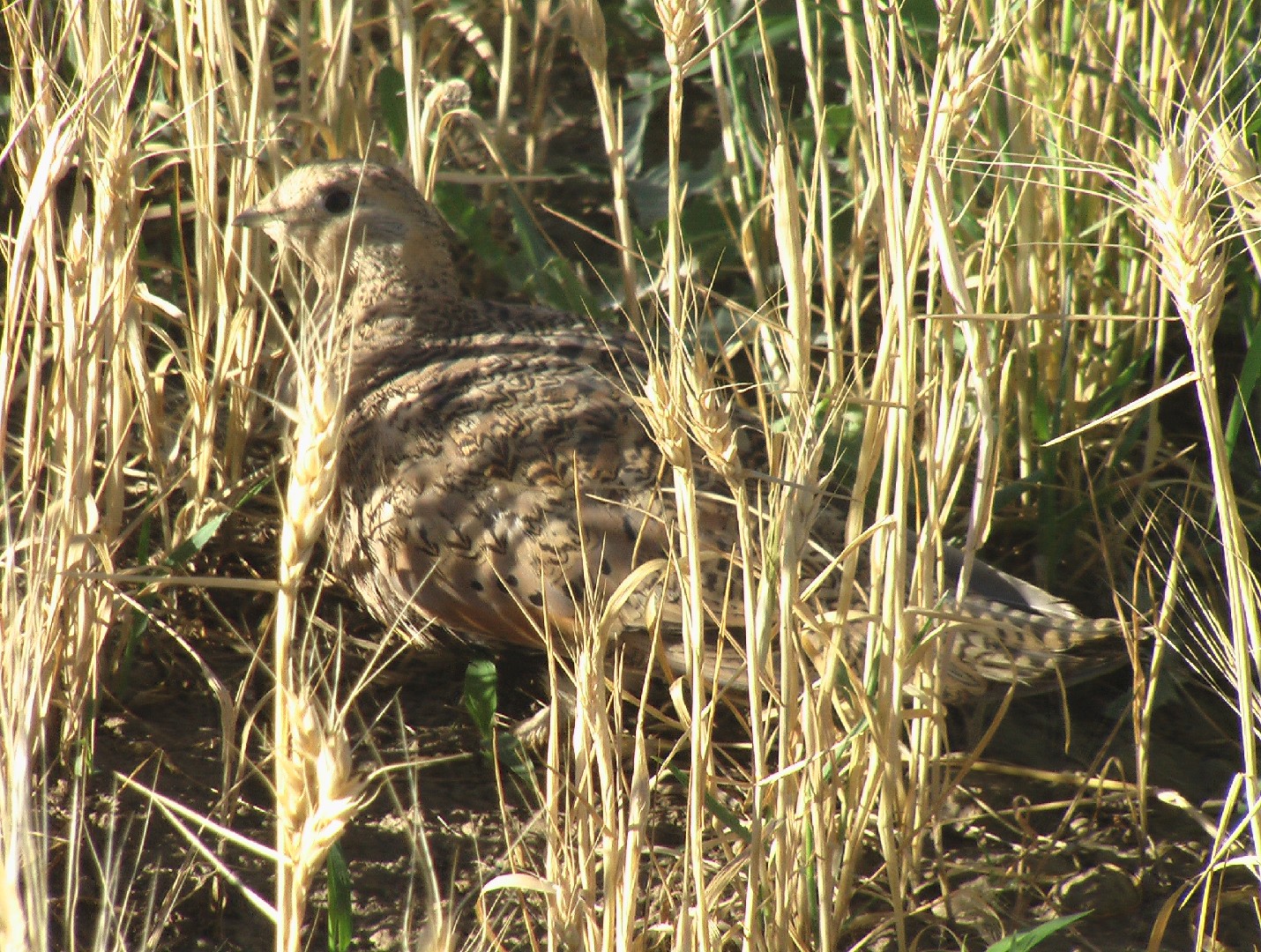Pallas's Sandgrouse
A species of Palearctic Sandgrouse Scientific name : Syrrhaptes paradoxus Genus : Palearctic Sandgrouse
Pallas's Sandgrouse, A species of Palearctic Sandgrouse
Botanical name: Syrrhaptes paradoxus
Genus: Palearctic Sandgrouse
Content
Description General Info
 Photo By Bogomolov.PL , used under PUBLIC-DOMAIN /Cropped and compressed from original
Photo By Bogomolov.PL , used under PUBLIC-DOMAIN /Cropped and compressed from original Description
Pallas's sandgrouse is 30–41 cm (12–16 in) long with small, pigeon-like head and neck, but sturdy compact body. It has long pointed wings and tail and legs and toes are feathered. Its plumage is buff coloured, barred above with a black belly patch and pale underwings. The black belly and pale underwing distinguish this species from the related Tibetan sandgrouse. The male Pallas's sandgrouse is distinguished by its grey head and breast, orange face and grey breast band. The female has duller plumage and lacks the breast band though it has more barring on the upperparts. The small feet lack a hind toe, and the three front toes are fused together. The upper surface is feathered, and the underneath has a fleshy pad. The appearance of the foot is more like a paw than an avian foot. 
Size
40 cm
Nest Placement
Ground
Feeding Habits
Pallas's Sandgrouse consumes a variety of plant seeds, green shoots, and cultivated grains such as wheat and millet. Feeding predominantly in the morning, with occasional evening drinks, pallas's Sandgrouse showcases versatility in its foraging.
Habitat
Pallas's Sandgrouse inhabits the steppes and semi-desert regions characterized by low and sparse vegetation, predominantly composed of grasses or shrubs such as Artemisia absinthium and Agriophyllum gobicum. These birds are also found in fallow lands and abandoned agricultural fields, showing a preference for clay soils over sandy or stony substrates. Generally, pallas's Sandgrouse is present in flat or hilly terrains and can be found in mountain valleys, steering clear of areas with shifting sands and regions devoid of water sources.
Dite type
Granivorous
General Info
Feeding Habits
Bird food type
Behavior
This species breeds across middle latitudes of central Asia on dry steppes and similar habitats. Its nest is a ground scrape into which 2–3 greenish eggs with cryptic markings are laid. It is a partial migrant, especially from the northern parts of its range in Kazakhstan and Mongolia, but the extent and distance of the southerly winter movement depends on the amount of snowfall. Pallas's sandgrouse occasionally irrupts from its regular breeding and wintering range across Europe as far west as Great Britain, where it has bred, and Ireland. The reasons for these remarkable movements are not fully understood, but they have become less frequent, probably due to contraction of the western Siberian range as the steppes become more agricultural. Due to their primarily dry diet of seeds, the sandgrouse needs to drink a large volume of water. The sandgrouse's wing morphology allows for fast flight with speeds up to 64 km/h (40 mph) having been recorded. Large flocks of several thousand individuals fly to watering holes at dawn and dusk making round trips of up to 121 km (75 mi) per day. Male parents soak their breast plumage in water while drinking, allowing their chicks to drink from the absorbed moisture on their return. Marco Polo mentions a bird called Bargherlac (from Turkmen bağırlak) in The Travels of Marco Polo. This is probably Syrrhaptes paradoxus (S. pallasii). 
Scientific Classification
Phylum
Chordates Class
Birds Order
Sandgrouse Family
Sandgrouse Genus
Palearctic Sandgrouse Species
Pallas's Sandgrouse